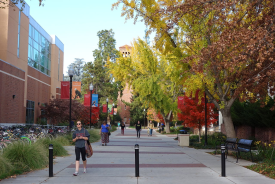Boston Marathon Bombing: Harvard Releases Study Exploring What Made The City Strong That Day
ByAhead of the 2014 Boston Marathon, Harvard University has released a new study to dissect in-depth what it was that made the city so strong in the wake of last year's bombings.
According to the Harvard Gazette, the study features confidential interviews with 25 senior-ranking officials coupled with extensive crisis management and criminal justice research. The report, "Why Was Boston Strong? Lessons from the Boston Marathon Bombing," goes more than 60 pages and praises the response of the city's law enforcement and hospital system.
"Boston was strong in the face of a horrific terrorist bombing of an iconic city for a host of interrelated reasons," reads the report. "A few must simply be attributed ... to infusions of good luck that favored the response and reduced the consequences of the attack. Others were the result of careful planning and fully intentional action, but are nonetheless unique to the Boston setting, and would be hard to replicate elsewhere."
This year's Boston Marathon will be run on Monday, April 21. As is a Boston tradition, the Red Sox will play a morning game starting at 11 a.m. in order to allow fans to get out in time for the end of the race. This year, the Sox will wear jerseys reading "Boston" over the front to commemorate the strength of the city.
The report was discouraged by the lack of "micro-command" when multiple law enforcement agencies cooperated to chase down the two bombing suspects, the Associated Press reported.
Police shot and killed Tamerlan Tsarnaev, who shot a seriously injured one officer. Dzhokhar, Tamerlan's brother, escaped that shootout and was found later hiding in Watertown. He currently awaits trial on multiple terrorism charges for killing three and injuring 260 in the April 15, 2013 bombings.
Report co-author Herman B. Leonard, a director at the Harvard Kennedy School's Program on Crisis Leadership, told the Boston Globe the police response was still great considering the chaotic atmosphere.
"From the very beginning, the senior people on the scene or arriving at the scene felt the need to find one another," Leonard said. "They realized the situation needed them to come together. That instinct is so important, and it was on display throughout the week." Still, that faded away after the manhunt began, which Leonard said will always lead to dangerous situations.
"They should have been more self-organizing, from a tactical perspective," he said.
Leonard said the medical response was exemplary since "everyone who left the scene alive is alive today."
"Some responders were carrying tourniquets, while others were improvised at the scene," reads the report. "Many lives were reportedly saved by the aggressive and immediate application of tourniquets."
Another co-author Christine M. Cole, executive director of the Program in Criminal Justice Policy and Management at Harvard's Kennedy School of Government, told the Globe the report is also designed to help law enforcement perfect their response to such situations.
"Our job is to figure out what are the lessons that are generalizable so we can all continue to learn from each other," Cole said. "How do we get people thinking that more is not better?
"What we're hoping for is that there are ways to practice and train so that when everyone shows up they're thinking that they're part of a team, where there is a structure, and they're not independent actors."
© 2025 University Herald, All rights reserved. Do not reproduce without permission.








